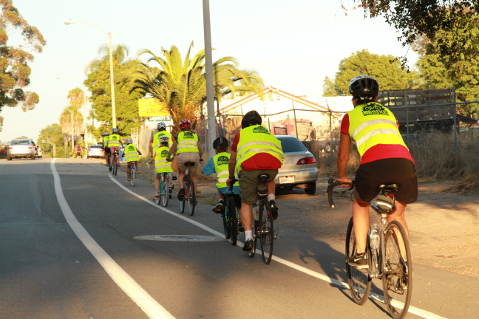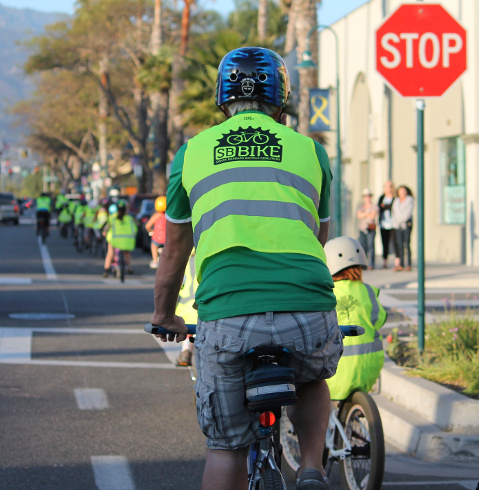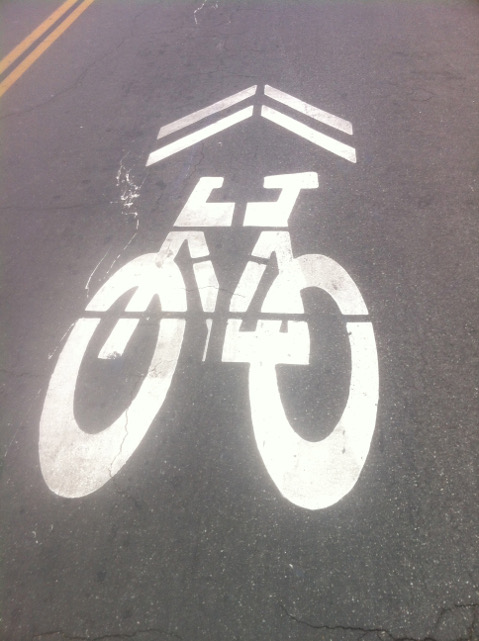City Writes Deeply Disappointing Bike Master Plan
Avoids Hard Choices Between Cars and Bikes

Within the next few months, Santa Barbara’s City Council will vote on the new Bicycle Master Plan that will provide safe and accessible streets for cyclists. Those plans will either boldly define a vision and the street-by-street plans to make it a reality or it will be a weak rehash of past plans and do little to improve connectivity and safety. Right now my personal bet is on weak tea.
Before I talk about the plan, I want to talk about whom this plan is for. It’s not for me, roadies, dedicated daily commuters, or the approximately 10 percent of cyclists who are described as the bold and fearless. We’ll ride on any street or intersection in any weather. The plan that the City of Santa Barbara proposes is designed to increase the number of residents who currently ride infrequently, are not confident cyclists, or feel our streets aren’t safe for their families.
Who are these cyclists? They are your neighbors, work colleagues, and friends. They are mothers and fathers riding with their young children to Leadbetter on a Saturday morning. They are elementary school kids cycling by themselves to their local school. They are kids biking after school to buy candy and churros at the neighborhood grocery store. They are college students riding on Rancheria Street to get to SBCC who haven’t biked since they were kids. They are elderly cyclists rolling to the doctor’s, Cottage Hospital, or on errands. They are the 60 percent of residents who would bike more if they felt that streets were safer. This Bike Master Plan must be for them.

So far, any bold leadership has been provide by cyclists, the over 1,100 members of the Santa Barbara Bicycle Coalition and COAST. They have rolled out to hours of public summits, workshops, and demonstration projects. You can read the draft Bicycle Master Plan here.
You will likely be angry if you were one of the thousands of residents who gave input through the online survey or public workshops. You took the time to place dots on dangerous intersections, you pointed out the lack of accessibility to safe routes in some neighborhoods, you spoke of the need for east-west connectivity, you suggested alternatives and spoke for safety as you ride from home to work, school, errands or the beach. Much of your thoughtful input was lost on the way to the final plan.
Forward-thinking civic leaders in cities across the United States are focusing on bicycle plans that include the Four C’s: Continuity, Connectivity, Convenience, and Completeness. It is not enough to provide a network of bicycling facilities; they must also follow the Four Cs. Bike networks must be:
Continuous: Too many bike lanes disappear at intersections and other stressful spots.
Connect: A single gap in an otherwise complete bike route can discourage potential bicyclists.
Convenient: People won’t ride bikes to key destinations if they must go far out of their way.
Complete: A successful network includes sidewalks, safe intersections, and access to transit and bike parking. This design approach is called Complete Streets.
Santa Barbara deserves a bike plan with the vision to improve bicycling over the next 15 years. These include policies to increase the percentage of people cycling in Santa Barbara, designing safer streets, and prioritizing future investments in bicycling. Last July, city planners presented a draft plan with many great projects that were praised by residents for improving connectivity and safety. Since that meeting, the bike network has undergone significant changes. I believe it no longer meets public expectations or the city’s goal, according to the 2011 Circulation Element update, which is to ensure that “Santa Barbara should be a city in which alternative forms of transportation and mobility are so available and attractive that use of an auto is a choice and not a necessity.”
The devil is always in the details. The plan becomes silent when it needed to speak the loudest. Yes, it is difficult to make the decision to remove on-street parking. But, at neighborhood meetings, I heard voices speak to the importance of creating complete bike lanes that close the gaps and make cyclists safer.
The plan proposes several great projects. Among them, green bike lanes on State Street, bike boulevards for Alisos and Chino streets, and an extension of bike lanes on Castillo/ Bath streets.
But there is a lot that is very bad. Some of the latest revisions to the bike plan decrease accessibility and safety. They include the removal of proposed bike lanes on Micheltorena, intersection improvements on San Andres, and a downgrade of treatments planned for Olive and Laguna.

Over half the proposed bike network projects are green-backed sharrows or green-painted bike lanes. A sharrow is a lane marking painted on the street to indicate where people should cycle.
Dr. Dan Fishbein has researched the effectiveness of sharrows, and he reports, “They may modestly improve some intermediate measures of safety (decrease sidewalk riding and unsafe motorist passing behaviors),” but there were no changes in ridership. Moreover, the only study of the effect of sharrows on the number collisions showed a slight trend toward more collisions after the introduction of sharrows. I’d agree with Dan’s conclusion that we should be very cautious in introducing sharrows in the hope of increasing safety or ridership.
Finally, according to the schedule, two thirds of the projects won’t be built before 2025 or later. I’m going to be 80 years old before some of these projects are completed by 2030! And, history teaches us that projects at the end of timelines are often never completed and live in limbo.
While I’m happy to see some strong projects remain in the plan, we still need to ensure that the bicycle network meets the plan’s own stated goals of more connectivity between bikeways and increased safety for people riding bikes in Santa Barbara.
On October 29, a standing-room-only crowd of cyclists and supporters told the joint Transportation and Circulation/Planning Commission meeting that the Bike Master Plan as presented was woefully inadequate. Committee members overwhelmingly agreed.
What can you do? If you want a bike plan that is forward thinking and addresses the most serious issues in our current bike network, it is not too late to make your voice heard. You can call, write or email city councilmembers or the mayor. If you participated in the Bike Master Plan outreach summits, took the online survey, and want the plan to effectively reflect your input, now is the time to speak loudly.



